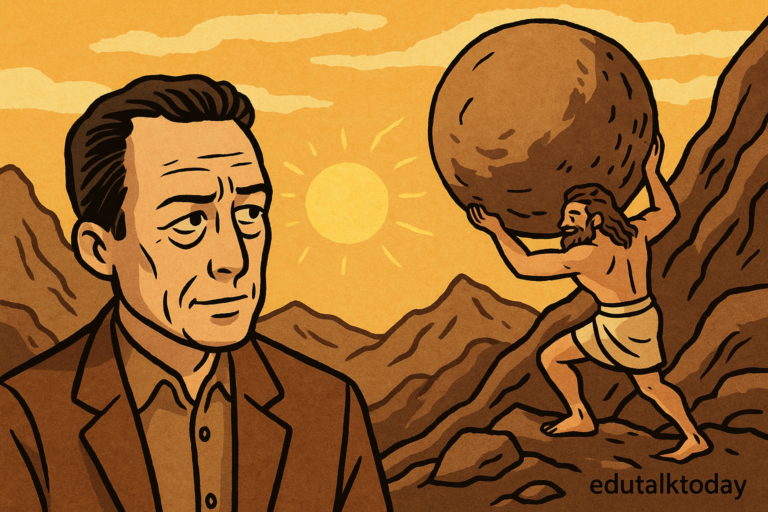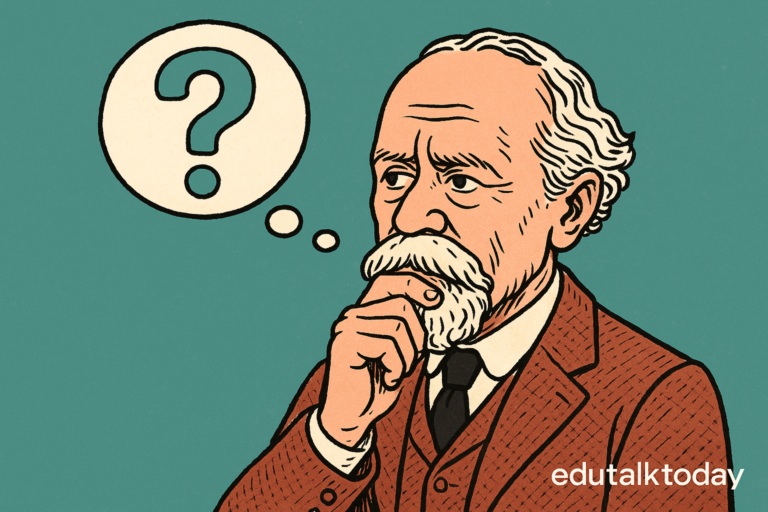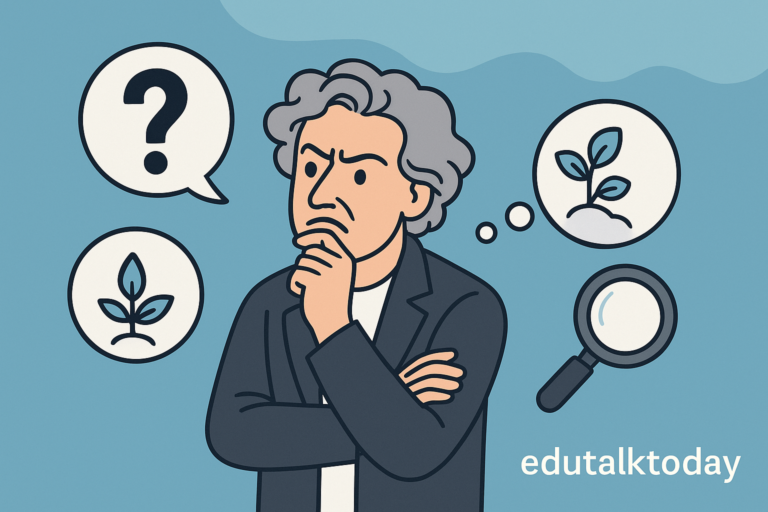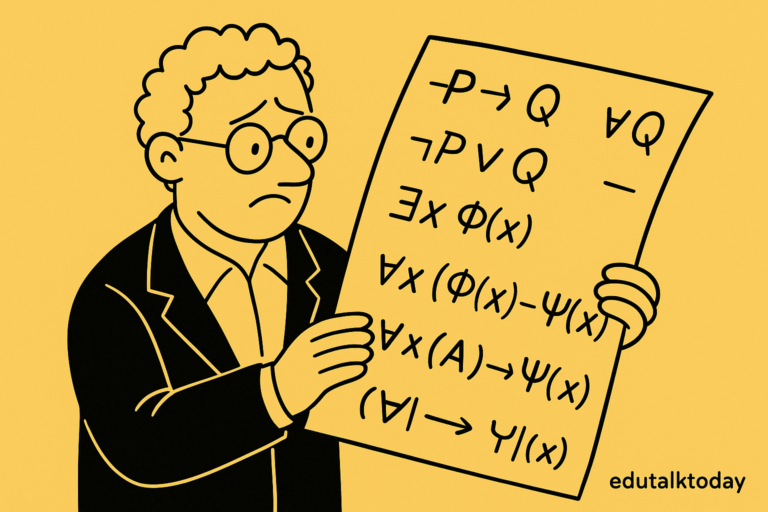Experience and Education in Pragmatic Thought According To John Dewey

Every time I circle back to John Dewey, I’m struck by how often he’s misunderstood—even by folks who really admire him. We throw around phrases like “learning by doing” and “education for democracy,” but honestly, I think Dewey would cringe at how flattened his ideas have become.
This post isn’t meant to repeat what we already know. I want to dig into the underlying logic of Dewey’s thought—especially how experience, democracy, and inquiry actually work together in his philosophy. If we only treat Dewey as an educational theorist, we miss the fact that he’s also making serious ontological and epistemological claims.
And here’s the twist: the deeper you go into Dewey, the more radical he gets. So if you think Dewey’s old news or just a friendly grandfather of progressive education, I’d say—hang tight. Let’s look again, and maybe look better.
Experience Isn’t What You Think It Is
Let’s start with a word we think we all understand: experience. Dewey uses it constantly—but here’s the thing: what he means by experience is a lot weirder and more ambitious than most people realize.
We often talk about experience like it’s an internal event. You do something, you feel something, maybe you reflect. But in Dewey’s framework—especially post-Experience and Nature (1925)—that view misses the mark. Dewey moves from seeing experience as a kind of interaction between self and environment to something much more dynamic: transaction.
So what’s the difference?
Interaction still implies two distinct entities (person/environment) bumping into each other. Think of a student touching a beaker in science class—it’s contact, maybe even responsive, but there’s a clear subject/object distinction. Transaction, on the other hand, means that the boundaries between organism and environment are not fixed. The student and the lab environment are mutually constituting each other in the process of inquiry.
This is not just a semantic upgrade. It’s a philosophical shift in how we understand what it means to learn, act, and exist in the world.
Here’s where it gets interesting for educators: if we think of learning environments as external to students—as contexts or scaffolds that help them “construct” knowledge—we’re still in the interaction model. But Dewey’s transactional view says: there’s no learner independent of their environment, and no environment that’s pedagogically neutral. They’re co-created in experience.
Let’s bring this down to earth with an example.
Imagine a student working on a community mapping project. In a traditional sense, we’d say the student “applies” their knowledge of geography and social studies to the local neighborhood. But if we take Dewey seriously, we’d say: The student and the neighborhood are shaping each other through the inquiry. The neighborhood isn’t just a site of application; it becomes an active part of the student’s cognitive and ethical development, and the student is also reconstituting what “neighborhood” means through their lens.
This helps explain why Dewey is so obsessed with the quality of experiences, not just their presence. In Experience and Education (1938), he makes this super clear: not all experiences are educative. Some are mis-educative—they shut down growth, foster passivity, or reinforce bad habits. That’s why he insists on the principles of continuity and interaction.
- Continuity means that any experience must connect meaningfully with past experiences and lead into future ones. It’s not just what happens now, but how it extends growth.
- Interaction (still a useful term, even as he pushes toward transaction) is about how the learner and the environment work together to shape meaning.
And here’s the kicker: in transactional experience, meaning doesn’t preexist the activity. It emerges. Which is exactly why Dewey was allergic to fixed curricula or rigidly pre-defined learning outcomes.
So when I hear someone say “Oh, Dewey just means kids should do more hands-on stuff,” I honestly wince a little. Because what Dewey’s actually proposing is far more radical: a theory of experience where the boundaries between self, action, and world are constantly being redrawn through intelligent inquiry.
That’s not just a method—it’s a worldview.
Dewey Wasn’t Just About Democracy—He Redefined It
Okay, let’s talk democracy—another Dewey favorite that’s gotten pretty diluted over the years. People often nod when we say “education is essential to democracy,” but if we’re just talking about civic knowledge, voting rights, or group projects in class, we’re barely scratching the surface of Dewey’s actual vision.
Here’s the core idea: Dewey didn’t see democracy as a political system. He saw it as a way of living—a moral ideal grounded in communication and shared inquiry. That’s a massive shift. It moves us away from procedural thinking and toward something more ecological and lived.
And if we follow him all the way down, it completely reframes how we think about schools.
Let me get specific. Dewey’s version of democracy has nothing to do with classroom voting or whether a school council exists. Those are cosmetic. For Dewey, a classroom is democratic only if it functions as a space of mutual responsiveness, continuous communication, and shared problem-solving.
In fact, to really break this open, here are five major misconceptions about Dewey’s democratic thought—and what he actually meant:
1. Democracy ≠ Majority Rule
This one still pops up all the time. Dewey didn’t care about head counts. In Democracy and Education (1916), he’s crystal clear: democracy is a mode of associated living, a way people coordinate action and meaning through communication. Majority rule is one possible tool, but for Dewey, it’s less important than the quality of the relationships. Are people really listening? Are they building meaning together?
In a classroom, this means decision-making isn’t democratic just because students get to vote on a book. It’s democratic if the process fosters real deliberation—where students reshape their thinking based on others’ ideas.
2. Voice Isn’t Enough
There’s been a strong push for “student voice” in recent years, which is great in theory. But Dewey would challenge us to ask: Is voice being used as expression—or inquiry? There’s a difference. Expression is important, but in Dewey’s model, what matters more is how voices enter into shared deliberation.
That’s the distinction between a classroom discussion and a collaborative inquiry. The former often reaffirms what students already think. The latter transforms those ideas through dialogue.
3. Education Builds Democracy from the Inside Out
We tend to treat civic education as a kind of plug-in—like, teach government structures, include a voting simulation, check the “democracy” box. But Dewey flips that. He says: education is how democracy reproduces itself.
It’s the mechanism by which a democratic society forms habits of cooperation, curiosity, and openness to revision. That means every subject, not just social studies, should cultivate these habits.
A math class where students explore multiple problem-solving methods and debate their merits? That’s democratic education.
A language arts class where students analyze texts through their own lived experiences and revise interpretations based on peer input? Also democratic.
4. Equality of Opportunity Misses the Point
This one gets tricky. Dewey believed in equity, but not in the “give everyone the same resources” kind of way. He was more interested in the conditions under which people could grow together. That means we have to care not just about access, but also about participation and transformation.
Are students given problems worth solving?
Are they working with others who challenge their assumptions?
Are they shaping their learning environments?
Equality of opportunity isn’t enough if the system still favors those who already know how to navigate it. Dewey’s deeper concern was growth for all—which sometimes means designing uneven supports to reach equitable ends.
5. Growth Isn’t About Progress—It’s Ethical
This one still blows my mind. We often talk about “growth” in education like it’s a metric: test scores, skill development, etc. But for Dewey, growth isn’t quantitative—it’s ethical. He defines growth as “the capacity for further experience.” That’s it. Not achievement. Not mastery. Just: can you keep growing?
And that’s deeply democratic. Because in Dewey’s world, a democracy depends on citizens who can revise their beliefs, recognize new problems, and act intelligently in changing conditions. Growth is how democracy sustains itself.
So if we’re designing classrooms where students are boxed into fixed roles, rigid goals, or narrow rubrics—we’re working against the very idea of democratic life.
All of this is why Dewey remains so relevant. His vision of democracy isn’t nostalgic—it’s demanding. And it calls us to see schools not as preparation for democratic life, but as its living lab.
Inquiry Is the Whole Game
Now we get to Dewey’s secret weapon: inquiry. Of all his ideas, this is the one I think gets misunderstood the most—and ironically, it’s also the one that holds everything else together.
People often treat inquiry like a teaching method. “Use inquiry-based learning” just means: let kids ask questions and do projects. But Dewey isn’t offering a method. He’s offering a philosophy of how humans engage with the world. Inquiry is how we make meaning in uncertain situations. It’s how experience, growth, and democracy happen.
Let’s break this down.
Inquiry Starts With Trouble
Dewey says all inquiry begins in what he calls an indeterminate situation. Something doesn’t fit—there’s doubt, tension, uncertainty. Maybe a student’s experiment fails. Or a community problem arises. Or two ideas conflict.
Here’s the key: doubt is not a failure of knowing—it’s the beginning of knowing.
In contrast to traditional education models that start from certainty (standards, objectives, truths to be transmitted), Dewey says we start with trouble, and then we work to resolve it.
The Logic of Inquiry: Step by Step
In Logic: The Theory of Inquiry (1938), Dewey maps out a pattern—not a formula, but a process. Here’s the basic shape:
- Indeterminate Situation
Something doesn’t make sense. There’s confusion, contradiction, or discomfort. - Institution of a Problem
We name the issue. It becomes a problem, something worth exploring. - Observation
We gather data—not just physical, but social, emotional, contextual. - Hypothesis Formation
We imagine possible ways forward. These aren’t guesses—they’re tools for reshaping the situation. - Reasoning and Experimentation
We try things out. Test ideas. See what happens. - Transformation of the Situation
Ideally, the problem is resolved or redefined—and we’ve grown in the process.
This isn’t just about science labs. It’s how a classroom works, how communities adapt, how democracy survives.
Why This Matters More Than Ever
Here’s the provocative bit: Dewey’s inquiry model is fundamentally anti-foundational. It doesn’t start from truths—it starts from tension. That puts it directly at odds with a lot of today’s educational structures.
Take something like backward design. It starts with “desired results” and plans backward. That’s efficient, sure—but it assumes we already know what matters. Dewey says: You can’t know that until you’ve lived the problem.
Or consider rigid content standards. They assume there’s a fixed body of knowledge everyone must acquire. But Dewey would ask: Whose knowledge? For what purpose? In what context? If the content isn’t arising from shared inquiry, it’s not transformative—it’s just content.
Real Talk: This Is Harder Than It Sounds
I won’t pretend Deweyan inquiry is easy to implement. It’s slow. It’s messy. It doesn’t produce neat outcomes or satisfy bureaucratic demands.
But it does something more valuable: it creates people who can think with complexity, live with uncertainty, and act with integrity.
I’ve seen it happen. I’ve seen students reframe social issues because they were invited to genuinely investigate them. I’ve seen teachers become learners in real time. And I’ve seen communities shift—not through preaching or politics, but through patient, collaborative inquiry.
If we’re serious about Dewey, we have to be serious about this messiness. Because inquiry isn’t just a classroom strategy. It’s how democratic life actually works.
So, Where Does That Leave Us?
If Dewey’s legacy feels both obvious and mysterious—it should. His work isn’t a system to be adopted. It’s a philosophy to live through, again and again, in changing contexts.
We’ve covered a lot: the radical nature of experience, a redefinition of democracy, and inquiry as the heartbeat of learning and life. But what ties it all together is Dewey’s insistence that we never settle for easy answers. Education, like democracy, must remain open, provisional, and grounded in lived experience.
And maybe that’s the most Deweyan move of all: to keep asking, What does this situation call for now? And to stay in that question long enough to grow.





